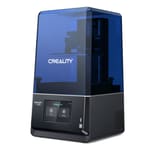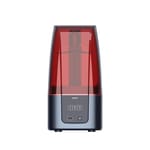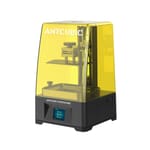Creality is kind of a big deal when it comes to desktop 3D printing. Known best for its range of budget-friendly FDM 3D printers, its popularity has seen it expand into the world of resin 3D printing with a product portfolio of resin 3D printers they’ve branded as the “Halot” series.
The Halot-One Pro is Creality’s latest Halot series offering, and comes with a few noteworthy features. There’s a larger build volume than that its predecessors at 130 x 122 x 160 mm, as well as Creality’s self-developed “Integral Light Source” technology, which Creality promises will improve accuracy and print quality. There’s also Wi-Fi connectivity, a 3K monochrome LCD providing a 51 micron print resolution, air filtration, and Creality’s new Cloud app which promises some useful remote control features.
Priced at $349, the Halot-One Pro is being pushed as a potentially user-friendly offering that’s easy and convenient to use. We’ve had a good read through its specs, so keep reading for the rundown of what we’ve learned about it so far.
Features
Build Volume
The Creality Halot-One Pro comes with build volume of 130 x 122 x 160 mm. If you’re coming from FDM printing, this might not sound like much space to create within, but it’s important to remember resin 3D printers excel at 3D printing objects with flowing, organic geometries at small-scale.
For reference, other popular resin 3D printers like the Elegoo Mars 3 and Anycubic Photon M3 have build volumes of 143 x 90 x 165 mm and 163 x 102 x 180 mm respectively. So, there are similar dimensions offered elsewhere.
Some of the key applications listed on Creality’s website for the Halot-One Pro include jewelry, tabletop gaming figures, home ornaments, and architectural designs. There’s a wide variety of downloadable models for you to find on the Creality Cloud app too – more on that in a moment.
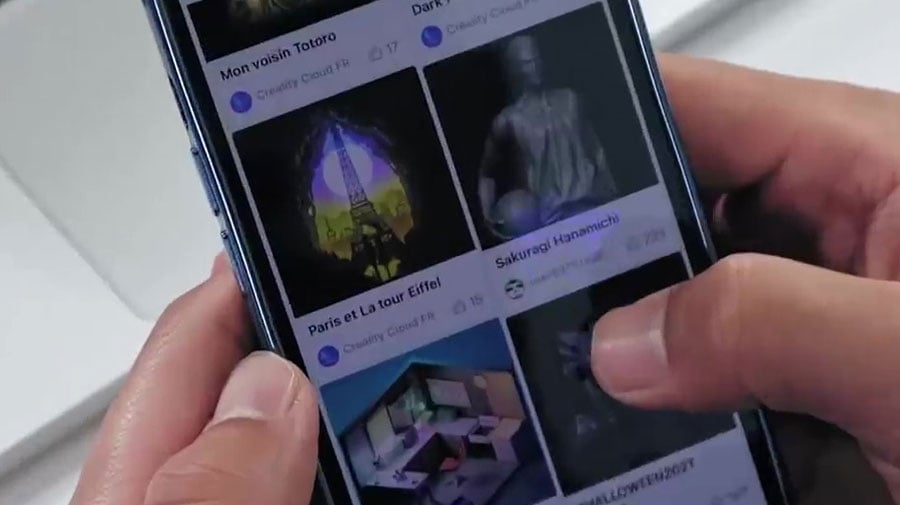
Self-developed Light Source
A lot of resin 3D printers use Parallel Emission technology, which uses a UV LED matrix to produce light. This can run into issues when it comes to surface accuracy. For instance, if one or more LED units in the matrix should fail, the evenness of a print’s surface can be impacted, reducing the accuracy of the final object.
Creality says its self-developed Integral Light Source technology solves this problem. By taking advantage of reflection and refraction, the light intensity distribution of the screen is more uniform, leading to consistent accuracy for great results with complex models. According to Creality’s internal testing, Parallel Emission only achieves 73.4% surface evenness, and the Integral Light Source can produce up to 94.05% evenness – with the potential of a remarkably accurate 99.73% surface evenness in optimal conditions. With the Halot-One Pro, the evenness of the light is quoted as being over 90%.
A notable feature highlighted by Creality is the ability to print fine support structures (or ‘micro holders’ as they call them) for models with complex geometries. These will apparently not deform and should prove easy to remove, prior to the print being cleaned and cured afterwards.
3k Monochrome LCD Display
A 3K 7-inch monochrome LCD is used to project each print layer into the resin tank. With a display resolution of 2560 x 2400 pixels, and a print resolution of 51 microns, it should be possible to produce some detailed prints, though other resin 3D printers offer finer resolution for theoretically higher print detail.
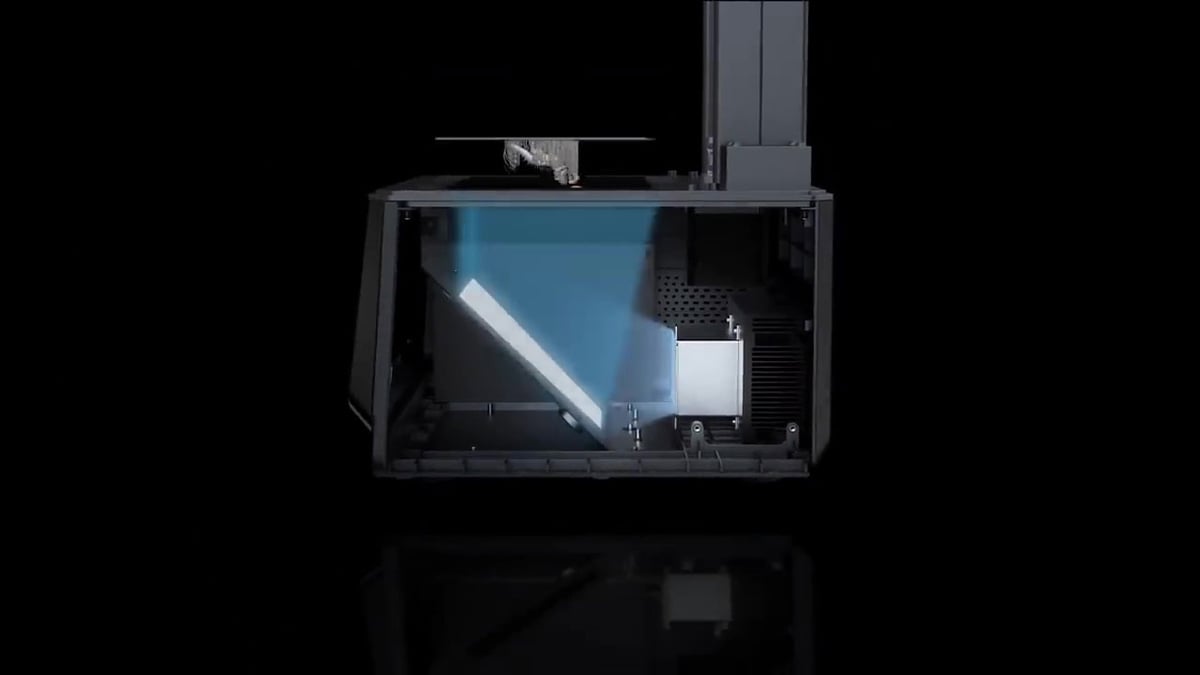
A cross-sectional view of Integral Light Source Technology in action, which uses a 3K monochrome LCD display cure layers of resin (Source: Creality)
Remote Control and Monitoring via Wi-Fi/Creality Cloud App
Wi-Fi connectivity built in to the Halot-One Pro gives it a great deal of flexibility. It can be used with a browser or the Creality Cloud app to start and stop prints, monitor job progress, adjust settings remotely, and deploy over-the-air firmware updates which enhance the hardware with optimizations and new features over time.
Creality Cloud actually has two tiers, one of which is free, and one of which is paid. The paid version will set you back $60 a year, but the primary features of the Cloud are available on the free tier. The key benefits to the premium service are an increase in cloud storage from 2 GB to 16 GB, a video allowance increase from three to 20 minutes, and the ability to use the photo scan feature 100 times instead of just ten.
Odor Control With Activated Carbon Filter System
Resin printing doesn’t lend itself easily to the average bedroom inventor or product designer in a tiny office. Resin odors are much more than just a problem, they’re a health hazard. The Creality Halot-One Pro integrates an activated carbon filter into the machine design, which goes some of the way to combat nasty resin fumes. That doesn’t mean you’ll want to use this in a living space though – our advice with resin 3D printers remains the same: only use them in a well ventilated area away from your living space.
5-inch LCD touchscreen
An LCD touchscreen acts as the main user interface and provides a flexible interface for text, fonts, and different character sets. It supports 14 languages in total (Simplified Chinese and English included) so should be accessible to users all over the world.
With high resolution and full-color graphics capabilities, it can also clearly show a render of what’s printing at the current time. It’s also useful to display a list of new features that are included when Creality pushes a firmware update.
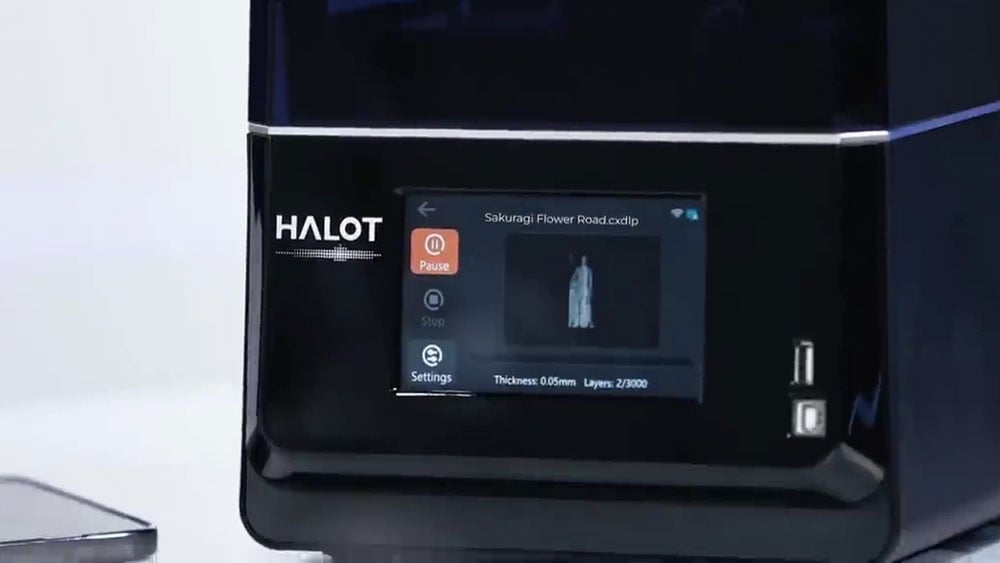
Compatible With A Range Of Popular Slicers
Slicers such as Creality’s own Halot Box, Lychee, and ChiTuBox are supported out-of-the box, and Creality claims to be constantly improving Halot Box to make it more adaptable and easier to use as time goes on. It also makes it clear that users aren’t locked into proprietary software; you can choose the slicing software you’re accustomed to.
Further Features
- Z-axis dual linear rails: The mechanical design of the Creality Halot-One Pro includes dual linear guide rails and T-type screws which should give the Z-stage of this printer excellent mechanical stability, and in turn greater layer accuracy.
- Processing power: At the heart of the Creality Halot-One Pro is an ARM Cortex-M4 processor and a 64-bit quad-core CPU and GPU, so expect a smooth and efficient operation.

Price
Creality has priced the Halot-One Pro at $349. This is $50 cheaper than the Halot-One Plus, another printer in the Halot series, but more expensive than some printers that could be considered rivals.
Anycubic’s Photon M3 comes in at under $300, as does the Elegoo Mars 3, and the Mars 3 Pro comes in $350. All three of those machines offer a superior print resolution and therefore should be capable of greater print detail, though the reality is that results will likely look similar to the naked eye. Creality likely expects the convenience of Wi-Fi connectivity and Cloud app will justify the extra investment from consumers, though how popular those features will be remains to be seen.
However, if its self-developed light source does offer any substantial improvement, the Creality Halot-One Pro could be a winner for a little extra cash.

Reviews
The general consensus of existing online reviews report that the unit is packaged extremely well with no room to move around in transit.
Besides the Halot-One printer, the box includes a plastic and metal scraper, a USB stick, extra FEP film, resin filters, and comprehensive instructions. There’s only one cord to plug in, and on first boot the machine will check for a firmware update.
Sample models are included on the USB stick, including an Eiffel Tower to demonstrate the printer’s capabilities and get you 3D printing quickly.
Some users have expressed frustration with using the Creality Cloud app – including comments about how they can’t upload their own G-code to send and execute; you’re required to enter 30 characters in a model description; and there’s limited info or manuals available in English.
The Halot Box slicer can push sliced models directly to the printer, and while users may also find this software frustrating at times, it isn’t the only option. Creality openly states you are not locked into its slicing ecosystem — users are free to use other slicers such as ChiTuBox and Lychee.
For a first time resin printer, reviews seem to suggest it’s a good option, and if you have the cash to spend it should produce impressive, detailed prints. If you’re familiar with resin printers already, it’s worth considering, but there are other options which we’ll explore a little further down.

Tech Specs
General Specifications
- Technology: MSLA
- Type: Resin
- Year: 2022
- Assembly: Fully assembled
- Manufacturer: Creality
3D PRINTING SPECIFICATIONS
- Build Volume: 130 x 122 x 160 mm
- Layer Height: 10 microns
- XY Resolution: 51 microns
- Z-axis positioning accuracy: 0.01 mm
- Printing Speed: 1-4 s/layer
- Bed-Leveling: Yes
- Display: 5-inch color touchscreen
- Third-Party Materials: Yes
- Materials: 405 nm UV resin
- Camera: No
SOFTWARE REQUIREMENTS
- Recommended Slicer: Halot Box, ChiTuBox, Lychee
- Operating system: Windows / macOS X / Linux
- File types: STL
- Connectivity: Wi-Fi, USB
DIMENSIONS AND WEIGHT
- Frame dimensions: 236 x 245 x 416 mm
- Weight: 6.9 kg

Similar Printers
The following machines could be of interest to you, but be sure to read our Best Budget Resin 3D Printers buyer’s guide to learn about the important features to look our for in budget resin printers. If you’re already experienced with resin 3D printing and looking for something at the higher-end of the scale, our Best Resin Printers Guide has you covered.
Creality Halot-One Plus
The Creality Halot-One Plus was released at a similar time to the Halot-One Pro, and has a few key differences. A slightly larger build volume and a 4K monochrome screen mean you can print bigger and at a slightly higher level of detail, as the print resolution is 40 microns. It still retains the same Wi-Fi connectivity and Creality Cloud capabilities as the One-Pro, and costs around $50 more.
Elegoo Mars 3
At the time of writing, our favorite resin 3D printer. The Mars 3 has a 143 x 90 x 165 mm build volume, similar to the Halot-One Pro, but its 4K monochrome screen gives a print resolution of 35 microns, meaning it should be capable of much more detailed prints.
The way it looks and handles as a resin machine give it a real edge, and it also comes complete with a free subscription to ChiTuBox Pro, at least for a year, and that’s worth around $169 by itself. The price? You can pick one up for under $300, and check out our deals page as it’s often on sale for far less…
Anycubic Photon M3
The build volume of the Anycubic Photon M3 comes in at 163 x 102 x 180 mm with a resolution of 40 microns. If you need more size and desire finer print detail, this machine is worth considering. It’s also cheaper, priced at $299 at the time of writing.
However, there’s no Wi-Fi connectivity with this machine, so if that’s important to you, you might find this one disappointing. If you can get past that though, we encourage you to check it out.
Lead image source: Creality
License: The text of "Creality Halot-One Pro: Specs, Price, Release & Reviews" by All3DP is licensed under a Creative Commons Attribution 4.0 International License.
CERTAIN CONTENT THAT APPEARS ON THIS SITE COMES FROM AMAZON. THIS CONTENT IS PROVIDED ‘AS IS’ AND IS SUBJECT TO CHANGE OR REMOVAL AT ANY TIME.

